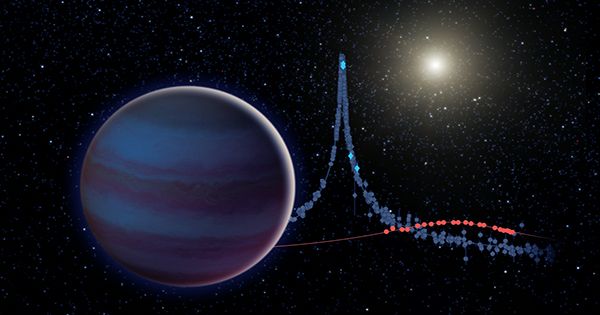New observations by Luhman 16 B, the closest brown dwarf to Earth, suggest that its atmosphere dominated by high-velocity global winds, which alter cloud distribution and give the object a striped appearance. News of this first atmospheric study has published in the Astrophysical Journal. Brown dwarfs are astronomical animal, some of which are smaller than Jupiter and Saturn, but ten times larger. However, it is not large enough to be a full-fledged star, so the bodies of these stars often called failed stars. These objects remain warm when they form and gradually cool, and an active atmosphere can be expected. However, it was not exactly clear if the atmosphere had bands or rotations or were somewhat different.
Lead author Professor Daniel Apai, from the University of Arizona, said in a statement, “We wondered if brown dwarfs would look like Jupiter with their regular belts and bands shaped by large, parallel, longitudinal jets, or would they be dominated by changing patterns like whirlwinds found at Jupiter’s poles?”

Closest Brown Dwarf to Earth Revealed To Have Stripes
Using a new algorithm and data from NASA’s Transiting Exoplanet Survey Satellite (TESS), the team has provided what any other telescope is currently capable of achieving: this brown dwarf covered in strips parallel to the equator, Polar Regions affected by extensive vortices and high-velocity winds that slow down the atmosphere as the failed star redistributes heat from the interior.
Apai added, “Wind patterns and large-scale atmospheric conduction from Earth’s climate to the presence of Jupiter often have a profound effect on the planet’s atmosphere, and we now know that such large atmospheric jets also shape the brown dwarf atmosphere.” “Above all, knowing how air circulates and redistributes heat in one of the most studied and closest brown dwarfs help us understand the climate, temperature extremes, and evolution of brown dwarfs in general.”
TESS designed to discover a new exoplanet by carefully observing changes in the brightness of thousands of stars. The Luhman 16 system is located just 6.56 light-years away, the sharp eye of TESS can be employed to identify atmospheric science.
Apai explained, “No telescope is large enough to provide detailed images of planets or brown dwarfs.” “However, it is possible to create a crude map of their atmosphere by measuring how the brightness of these rotating objects changes over time – a technique that could be used to map other Earth-like planets in other solar systems in the future that would otherwise be difficult to see.” Luhman 16 B is 28 times the mass of Jupiter and weighs 34 times the mass of Jupiter with a brown dwarf (Luhman 16 A) in a binary system.
















